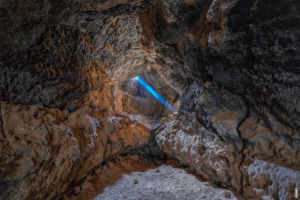The Enchanting Dance of Frost on Windows
Have you ever gazed out of your window on a chilly winter morning and marveled at the intricate patterns etched onto the glass? These mesmerizing formations, known as icy patterns, are a natural phenomenon that has captivated both scientists and artists alike. Join us on a journey to unravel the secrets behind the formation of these delicate and beautiful creations.
The Science of Icy Patterns
When temperatures drop below freezing, the moisture in the air can condense on the surface of windows. This moisture takes the form of ice crystals, which arrange themselves in a multitude of fascinating patterns. The precise shape and structure of these patterns depend on a variety of factors, including the temperature, humidity, and airflow around the window.
A Symphony of Shapes
One of the most common types of icy patterns is known as fern frost. This intricate formation resembles the delicate fronds of a fern, with countless tiny branches branching out in all directions. Another frequently observed pattern is known as feather frost, characterized by long, feathery streaks that seem to flow across the windowpane. Other patterns include the captivating dendritic frost, which resembles the branching structure of trees, and the ethereal ice flowers, which appear as delicate petals frozen in time.
The Role of Window Glass
The composition and properties of the window glass itself can significantly influence the formation of icy patterns. Different types of glass, such as single-pane and double-pane windows, can create distinct patterns due to variations in insulation and heat transfer. Additionally, the presence of impurities or imperfections in the glass can create unique formations by altering the way moisture condenses and freezes.
Nature’s Artistry
While icy patterns on windows may seem like a random occurrence, they are actually governed by the laws of physics and mathematics. The formation of these patterns follows intricate geometric principles, such as fractal geometry and diffusion-limited aggregation. These scientific concepts explain why the ice crystals arrange themselves in such mesmerizing and symmetrical patterns.
Post
Post
A Source of Inspiration
Icy patterns have long fascinated artists, inspiring them to create stunning works that capture the beauty of these transient formations. Paintings, photographs, and sculptures have all been influenced by the delicate shapes and textures found on windows during the winter months. Artists often seek to convey both the fragility and the ephemeral nature of icy patterns, reminding us of the fleeting beauty that exists in the natural world.
The Window to a Winter Wonderland
Next time you find yourself face-to-face with a window adorned with icy patterns, take a moment to appreciate the exquisite beauty that lies before you. These frozen artworks serve as a reminder of the intricacy and wonder of the natural world, reminding us to pause and marvel at the hidden marvels that surround us every day.



